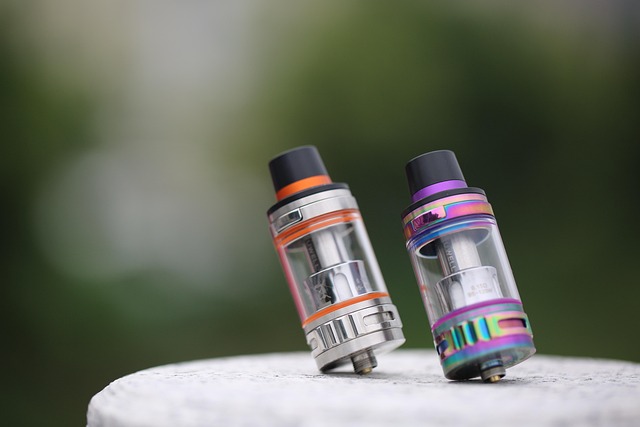Vapes Australia: The Evolution and Impact of Vaping in the Land Down Under
Introduction
In recent years, vaping has emerged as a significant phenomenon in Australia, transforming the landscape of recreational smoking and nicotine consumption. With increasing concern over the health impacts of traditional smoking, many Australians are switching to vapes as a perceived safer alternative. This article delves into the evolution of vaping in Australia, exploring its legal framework, health implications, social acceptance, and the future of the vaping industry in the country.
The Historical Context of Vaping in Australia
Vaping began its rise in popularity in Australia around the mid-2010s. Initially seen as a niche product, it rapidly gained traction among smokers seeking alternatives to cigarettes. Vaping products, ranging from e-cigarettes to vape mods, offered various flavors and nicotine levels, quickly appealing to a diverse demographic. This surge in popularity prompted a nuanced discussion about regulation, public health, and consumer safety.
Legal Framework Surrounding Vaping
The legal landscape for vapes in Australia is complex and varies considerably between states and territories. At the federal level, nicotine-containing e-liquids are classified as a prescription-only medicine. Consequently, smokers and vapers must navigate a patchwork of laws that can be confusing. Some states allow certain vaping products to be sold in retail spaces, while others impose stricter regulations. This inconsistent regulatory environment affects accessibility and limits public understanding of vaping products.
Health Implications of Vaping
Public health experts have debated the health implications of vaping extensively. Proponents argue that vaping is a less harmful alternative to traditional smoking, pointing to studies indicating reduced exposure to harmful chemicals. However, critics raise concerns about the potential long-term health effects of vaping, especially among young people. The Australian Institute of Health and Welfare has highlighted increasing vaping rates among youth, prompting calls for greater regulation and education surrounding these products.
Social Acceptance of Vaping in Australia
The social acceptance of vaping has evolved significantly. Initially viewed with skepticism, perceptions have started to shift as more individuals recognize vaping as a legitimate smoking cessation tool. However, a significant portion of the population still harbors concerns about vaping’s appeal to youth and its potential for addiction. Community awareness campaigns and educational programs have become crucial in addressing these concerns and promoting responsible vaping practices.
Market Trends and Industry Growth
The vaping industry in Australia has witnessed remarkable growth, driven by innovation and evolving consumer preferences. A diverse array of products has entered the market, including disposable vapes, pod systems, and customizable devices. The availability of various flavors has also played a pivotal role in attracting new users. As the market expands, competition among manufacturers has intensified, leading to improvements in product quality and safety standards.
Case Study: The Rise of Disposable Vapes
Disposable vapes have seen a surge in popularity in Australia, particularly among young adults. Their convenience and ease of use make them an attractive option for new users. Market analysis indicates that brands focused on disposable products have captured a significant share of the vaping market.
| Brand | Market Share (%) | Price Range (AUD) |
|---|---|---|
| Brand A | 30% | $15-$25 |
| Brand B | 25% | $10-$20 |
| Brand C | 20% | $12-$22 |
The Role of Technology in Vaping
Advancements in technology have significantly influenced the vaping experience. Modern devices offer customizable settings, allowing users to adjust wattage, temperature, and airflow. The introduction of smart devices that connect to mobile apps has further enhanced the user experience, promoting personalized preferences and improved safety.

The Controversy Surrounding Regulation
As vaping becomes more mainstream, the debate over regulation intensifies. Advocates for stricter regulations argue that tighter controls are necessary to protect public health, particularly among youth. However, opponents point out that overly strict regulations might drive vapers back to conventional cigarettes, undermining public health efforts. Balancing regulation with consumer freedom remains a critical challenge for policymakers.
Vaping and Youth: A Growing Concern
One of the most pressing issues regarding vaping in Australia is the rising prevalence among young people. Surveys indicate a concerning trend, with many youths using vapes despite being previously non-smokers. This trend has prompted schools and communities to implement educational programs aimed at informing young people about the risks associated with vaping and nicotine addiction.
Vaping and Cultural Shifts
The rise of vaping reflects broader cultural shifts surrounding smoking and nicotine consumption. Vaping is increasingly marketed as a lifestyle choice, with a focus on community and identity among users. Events, meet-ups, and social media platforms devoted to vaping culture have created a sense of community among users, further shaping perceptions and experiences of vaping.
A Comparison of Vaping and Traditional Smoking
To understand the impact of vaping, it is essential to compare it with traditional smoking. The following table illustrates key differences between the two:


| Criteria | Vaping | Traditional Smoking |
|---|---|---|
| Nicotine Delivery | Via vaporized e-liquid | Via burning tobacco |
| Harmful Chemicals | Fewer harmful substances | Thousands of harmful chemicals |
| Social Perception | Gaining acceptance | Declining acceptance |
What Does the Future Hold for Vaping in Australia?
The future of vaping in Australia is a topic of much speculation. With ongoing developments in regulations, public attitudes, and technology, the vaping landscape is poised for continued evolution. The balance between promoting vaping as a cessation tool while safeguarding youth will be crucial for shaping policies moving forward.
Questions and Answers
Q1: What are the primary health concerns associated with vaping?
A1: The primary concerns include potential lung damage, nicotine addiction, and unknown long-term effects of inhaling vaporized substances. Public health officials are particularly worried about the increasing usage among youth.
Q2: Are there any particularly effective strategies to encourage smokers to switch to vaping?
A2: Educational programs detailing the risks of traditional smoking and the relative safety of vaping, along with access to nicotine replacement therapies, have proven effective in helping smokers transition.
Q3: What role do flavors play in the appeal of vaping products?
A3: Flavors significantly enhance the appeal of vaping, especially among younger users. They serve to create a more enjoyable experience compared to traditional tobacco products, potentially attracting new users who might not otherwise consider smoking.







